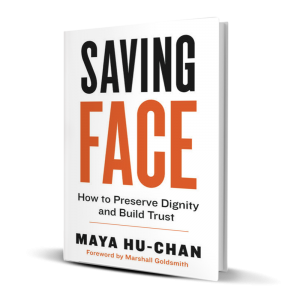My client turned an unfortunate event into a chance to create a stronger, more inclusive culture. Here’s what you can learn from her approach.
My client, Jasmine, received a whistleblower report of a microaggression against someone on her team. Many leaders might minimize the incident or ignore it entirely, but Jasmine used it as an opportunity to reinforce a culture of inclusion and accountability for not only the perpetrator and victim but her entire department.
Jasmine leads a large corporate legal team. As a Black woman, she is personally aware of the harm of microaggressions. She knew she had to act.
 The whistleblower said they overheard their colleague, Evan, talking about another colleague, Sandra. They had both been up for a promotion, but Sandra got the role. “Obviously because she’s LGBTQ,” Evan said, laughing, assuring everyone he was only joking.
The whistleblower said they overheard their colleague, Evan, talking about another colleague, Sandra. They had both been up for a promotion, but Sandra got the role. “Obviously because she’s LGBTQ,” Evan said, laughing, assuring everyone he was only joking.
Jasmine’s first decision was to protect the whistleblower’s identity. She didn’t want to betray their trust, which would also discourage others from stepping forward in the future. Then, she knew she had to address Evan directly.
In an email, she stated that discriminatory statements — even delivered as “jokes” — are not tolerated. She also advised him to act with grace in the face of disappointment, instead of lashing out with demeaning behavior.
In a reply, Evan said he appreciated that Jasmine helped him “save face” by giving feedback in private. He also acknowledged he didn’t realize his “joke” could have unintended consequences on others and his own reputation.
Later that day, during a management staff meeting, Jasmine told her peers about the incident. She didn’t reveal names, but she made her peers aware of this type of behavior, its potential for harm, and their responsibilities as leaders to address it.
Jasmine then took things one step further. She emailed her entire department — more than 200 people — to emphasize her expectations of appropriate behavior, zero tolerance for microaggressions, and whistleblower protection.
Afterward, several people thanked Jasmine for shedding light on the issue.
I asked Jasmine to reflect on her response to the incident. Her reply offers lessons for all leaders navigating similar issues:
1. Create a “learning zone”
Amy Edmundson, the organizational psychologist who coined the term “psychological safety,” posits that leaders must balance psychological safety and accountability to facilitate growth. With too little psychological safety and too little accountability, people are in the “apathy zone” — they’re indifferent, checked out, and disengaged. With high psychological safety and low accountability, people are in comfort zones, with little incentive to change. An environment of high accountability and low psychological safety creates anxiety and fear of taking risks. But when leaders create an environment of high accountability and high psychological safety, they’re in a “learning zone,” able to learn and grow from mistakes such as Evan’s.
Jasmine helped Evan into that zone by keeping the feedback private and respectfully and candidly insisting on accountability.
“I wanted to show Evan a good example of how to deal with this kind of situation as a leader. I also wanted to engage him in a positive way — to say, I value you as an employee, and this behavior won’t be tolerated,” she said.
2. Understand the big impact of microaggressions
Jasmine knew that although this was an isolated incident, brushing it under the rug could have ripple effects across the entire team.
“It’s like a virus. It can spread quickly if someone sees behavior like this. As a leader, I have the responsibility to create inclusion and psychological safety for all. Everyone needed to be reminded of the expectations and what kind of culture we want to create,” Jasmine said.
Jasmine’s department-wide email also validated the experience of anyone who overheard and was troubled by Evan’s words. It let them know that action was taken, reinforcing a culture of inclusion with not only words but also actions.
“It’s my responsibility to set the right expectations and the right tone,” she said.
When facing incidents of bias or discrimination in your own teams, remember Jasmine’s multilayered response. By creating an environment of both high psychological safety and high accountability, she not only helped a promising leader learn from their mistake, but also helped create a truly inclusive workplace for her whole team.
 My book, Saving Face: How to Preserve Dignity and Build Trust, illustrates how we can honor face to create positive first impressions, avoid causing others to lose face, and, most importantly, help others save face to build trust and lasting relationships inside and outside the workplace.
My book, Saving Face: How to Preserve Dignity and Build Trust, illustrates how we can honor face to create positive first impressions, avoid causing others to lose face, and, most importantly, help others save face to build trust and lasting relationships inside and outside the workplace.
This article was originally posted on Inc.com

